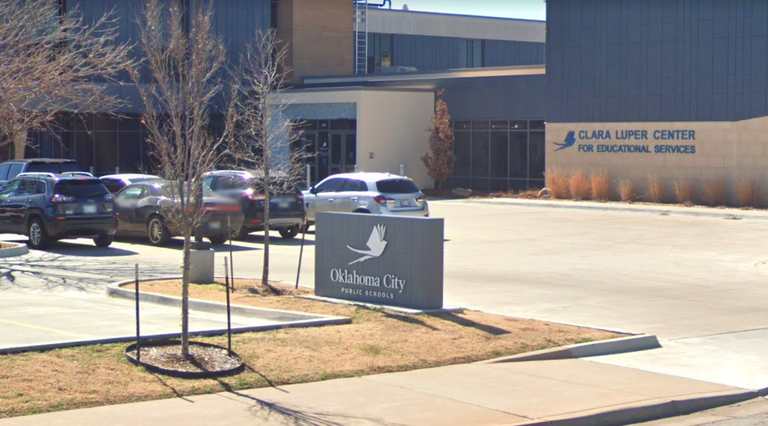
Education
Byron Schlomach, Ph.D. | October 14, 2022
OKCPS FAQ
Byron Schlomach, Ph.D.
How many students are enrolled in Oklahoma City Public Schools?
OKCPS enrollment is 31,026. Since 2014-15, enrollment has declined from 41,074—a drop of 24.5%.
Statewide enrollment during that time period has increased 0.76%—from 688,300 to 693,587.
How much money does OKCPS spend per student?
OKCPS spending per student was $13,106.68 in 2021. This is an increase of 49.1% from $8,791.07 in 2014-15. OKCPS spending per student is 29.9% higher than the statewide average.
Statewide spending per student was $10,091.41 in 2021. This is an increase of 23% from $8,209.92 in the 2014-15 school year.
The average private school tuition in Oklahoma is $6,568 for elementary schools and $7,605 for high schools.
How much of that money is spent on instruction?
OKCPS instruction expenditures were $6,188.46 per student in 2021, or 47.2% of total expenditures.
Since the 2014-15 school year, instruction expenditures per student have increased 37.4% (from $4,502.55 per student). That year, instruction expenditures were only 51.2% of total expenditures.
Statewide instruction expenditures in 2021 were 56.3% of total expenditures, an increase from 2015 when instruction expenditures were 51% of the total. Comparing 2021 to 2015, total instruction expenditures statewide increased 31.8%, total overall expenditures increased 23.9%, and the number of students increased less than 1%.
How much is the superintendent paid?
Total compensation for the OKCPS superintendent in 2015 was $286,381 with a base salary of $259,258. A new superintendent’s total compensation for 2021-22 was $382,333 with a base salary of $290,029. This figure does not include district-paid retirement benefits, which are substantial. For example, according to Oklahoma Teachers’ Retirement System data compiled in this data tool, Tulsa Union superintendent Cathy Burden retired at age 65 and is paid $200,718 per year. David Goin retired as Edmond superintendent at age 61 and is paid $181,298 per year.
Average superintendent total compensation in Oklahoma is roughly $123,027.
How well are OKCPS students performing academically?
7% of OKCPS students are proficient or better in academic performance.
U.S News & World Report indicates only 18.4% of OKCPS seniors are college ready; 8% of OKCPS students are proficient in math and 12% are proficient in science.
How do OKCPS students stack up against their peers?
OKCPS performance is near the bottom of Oklahoma, which is near the bottom of the U.S., which itself performs poorly internationally.
In 2019, Oklahoma City’s overall ranking as a district was 519 out of 540 school districts, the bottom 5% of districts. OKCPS’s graduation rate is 74%, significantly below the state’s 83%—nevertheless, OKCPS likely has an issue with grade inflation.
24% of Oklahoma students are proficient or better in academic performance.
U.S. News & World Report ranks Oklahoma 44th (eighth from the bottom) among the 50 states and Washington, DC, based on the number of schools that are in the top 25% of all schools nationally.
Oklahoma ranks 41st (11th from bottom) among the states in high school graduates’ college readiness.
Oklahoma’s National Assessment of Educational Progress results from 2019 are “significantly lower” than the nation’s public schools overall.
The U.S. spends more per-student on education than virtually any nation in the world (except very rich, very small ones), yet performs poorly internationally (except in literacy).
What about OKCPS staffing levels?
From 2015 to 2021, total full-time equivalent (FTE) certified staff in Oklahoma City Public Schools fell from 3,104 to 2,916, a decline of 9.4%. This is considerably less than the percentage decline in students, so that the student/staff ratio fell from 13.2 to 10.6. From 2015 to 2021, total FTE certified staff statewide increased from 50,973 to 52,932, an increase of nearly 4 percent, dropping the student/staff ratio from 13.5 to 13.1.
Between 2015 and 2021, the number of FTE teachers in Oklahoma City Public Schools fell from 2,558 to 2,238, a 12.5% reduction, only half of the drop in the number of students. Thus, the student/teacher ratio fell from 16.1 to 13.9.*
Between 2015 and 2021, the number of FTE counselors in Oklahoma City Public Schools rose from 66.8 to 111.4, a 66.8% increase, despite a 24% decline in the number of students.
Between 2015 and 2021, the number of FTE teacher trainers in Oklahoma City Public Schools increased from 2 to 77, a 3,750% rise.
Between 2015 and 2021, the number of FTE teachers statewide increased from 42,170 to 42,920, a 1.8% increase, more than twice the percentage increase in students. Thus, the student/teacher ratio fell from 16.3 to 16.2.
Between 2015 and 2021, the number of FTE counselors statewide increased from 1,603 to 1,874, a 17% increase, 22 times greater than the increase in the number of students.
Between 2015 and 2021, the number of FTE teacher trainers statewide increased from 284 to 630, a 122% increase, 167 times greater than the increase in the number of students.
*Note: By using FTEs for teachers, the student/teacher ratio is inflated compared to other measures.
Byron Schlomach, Ph.D.
Contributor
Byron Schlomach (Ph.D. in economics, Texas A&M University) has served as director of the Center for Economic Prosperity at the Goldwater Institute and as chief economist for the Texas Public Policy Foundation. He has also served as scholar-in-residence at the Institute for the Study of Free Enterprise at Oklahoma State University. Write to him at redneckeconomist@reagan.com.